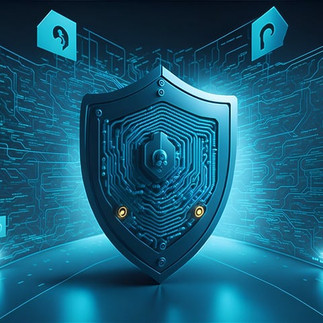
In an increasingly digital world, online transactions have become a cornerstone of commerce. However, with the convenience of digital payments comes the ever-present threat of payment fraud. From phishing scams to sophisticated hacking techniques, cybercriminals are constantly innovating new ways to exploit vulnerabilities in payment systems. This blog explores the various types of payment fraud, recent trends, and effective strategies to combat them.
---
What is Payment Fraud?
Payment fraud refers to any illegal or deceptive activity designed to steal money or financial information during a payment transaction. Fraudsters often target businesses, consumers, and financial institutions, exploiting gaps in security to carry out their schemes.
---

**Common Types of Payment Fraud**
1. Credit Card Fraud
Criminals use stolen credit card details to make unauthorized purchases or transactions. These details are often obtained through phishing attacks, skimming devices, or data breaches.
2. Phishing and Social Engineering
Fraudsters impersonate legitimate entities to trick individuals into providing sensitive information such as passwords, bank account details, or credit card numbers.
3. Identity Theft
Using stolen personal information, criminals create fake accounts or apply for credit cards and loans in someone else’s name.
4. Account Takeover
Hackers gain unauthorized access to a victim's financial accounts and execute fraudulent transactions, often bypassing security controls.
5. Friendly Fraud
This occurs when a legitimate buyer disputes a transaction, claiming it was unauthorized, to receive a refund while keeping the purchased item.
6. Payment Gateway Hacking
Fraudsters exploit vulnerabilities in payment systems to intercept or redirect transactions.
7. Invoice and Business Email Compromise (BEC
Cybercriminals manipulate business communications, sending fraudulent invoices or altering payment details to reroute funds.
8. Cryptocurrency Fraud
With the rise of digital currencies, fraudsters use scams like fake ICOs (Initial Coin Offerings) or phishing sites to steal cryptocurrency.
---
Recent Trends in Payment Fraud
1. Increased Use of AI by Fraudsters
Cybercriminals are leveraging artificial intelligence to automate and scale their attacks, making fraud detection more challenging.
2. Buy Now, Pay Later (BNPL) Scams
BNPL services have become a target for fraud due to less stringent credit checks, allowing criminals to exploit these platforms.
3. Mobile Payment Fraud
As mobile payments grow in popularity, fraudsters are targeting weaknesses in mobile wallet apps and NFC-based transactions.
4. Synthetic Identity Fraud
Criminals combine real and fake information to create synthetic identities, which are then used to open accounts or secure credit.
5. E-Commerce Fraud
The boom in online shopping has led to increased fraud targeting e-commerce platforms, including fake websites and counterfeit products.
---
How to Prevent Payment Frauds
For Businesses
1. **Invest in Robust Fraud Detection Tools**
Utilize advanced technologies like AI-powered fraud detection systems to monitor and flag suspicious transactions.
2. **Implement Multi-Factor Authentication (MFA)**
Adding extra layers of authentication can prevent unauthorized access to accounts.
3. **Regularly Update Systems**
Keep software, payment gateways, and security systems updated to protect against emerging threats.
4. **Educate Employees**
Train staff to recognize phishing attempts, fraudulent invoices, and other common scams.
5. **Tokenization and Encryption**
Protect sensitive payment data by encrypting it and using tokenization to replace real information with secure tokens.
**For Consumers**
1. **Monitor Bank Statements**
Regularly review transaction histories to spot unauthorized activities quickly.
2. **Use Strong Passwords**
Avoid reusing passwords and enable MFA on all financial accounts.
3. **Avoid Public Wi-Fi for Transactions**
Public networks are often unsecured and can be exploited by hackers to intercept payment data.
4. **Be Skeptical of Unsolicited Communications**
Do not click on links or share personal information in response to unexpected emails or messages.
5. **Verify Vendor Authenticity**
Before making a payment, ensure the website or seller is legitimate. Look for signs like secure payment gateways and verified reviews.
---
The Road Ahead: Building a Secure Payment Ecosystem
Payment fraud will continue to evolve as technology advances. However, by staying vigilant and adopting proactive security measures, individuals and organizations can reduce their exposure to these risks. Collaboration between businesses, financial institutions, and regulators is also crucial in building a secure digital payment ecosystem.
The key to combating payment fraud lies in education, technology, and a collective commitment to security. Staying informed about emerging threats and adapting to new challenges is the first step toward safeguarding financial assets in an increasingly connected world.
---
Conclusion
Payment fraud is a significant challenge in the digital economy, but it is not insurmountable. Whether you’re a consumer or a business, taking proactive steps to secure transactions can protect you from falling victim to fraud. Remember, prevention is always better than recovery. By understanding the risks and employing the right strategies, you can stay one step ahead of fraudsters.















